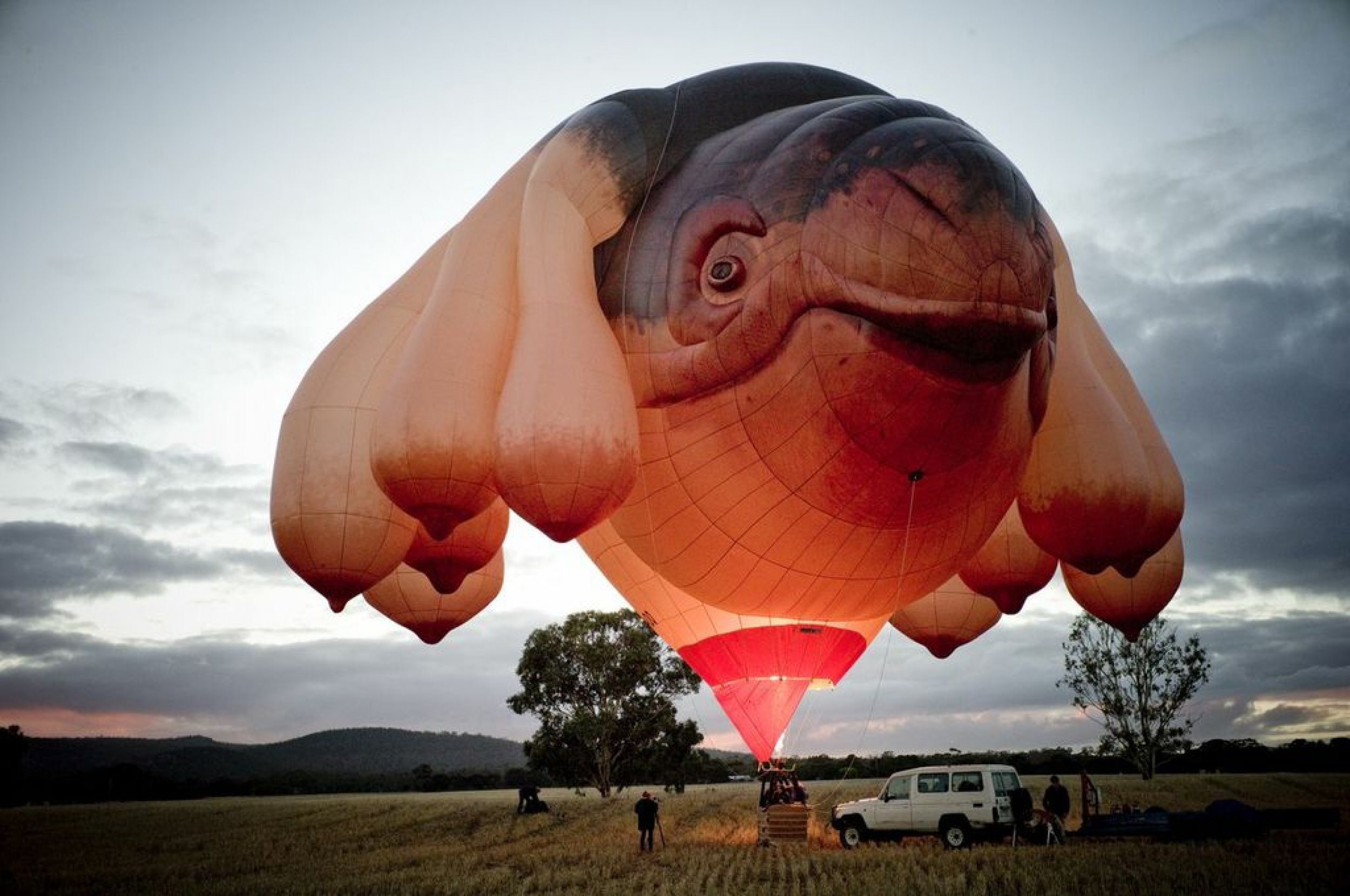Introducing Skywhale: Canberra, Australia’s Controversial $300K Centenary Balloon [PHOTOS]
It’s a bird, it’s a plane, it’s Skywhale?
In one of the most bizarre (and controversial) decisions ever to rock the Australian capital, Canberra commissioned a 112-foot-long, 75-foot-high (34m x 23m) multibreasted inflatable “whale” to float over the city in honor of its 2013 centenary celebrations.
The floating leviathan took 16 people seven months and 3.5 kilometers (2.2 miles) of fabric to build -- all at a cost of A$172,000 (US$171,700), though A$50,000 came in philanthropic funding. The project itself will cost another A$166,000 (US$165,700) for operation expenses, as well as educational and media resources, making it one of the Centenary of Canberra’s larger commissions of all exhibitions, performances and events in the year-long celebration.
The price tag hasn’t gone over well with many, who were further angered this week by news that the city of Canberra does not actually own the work. That honor belongs to Global Ballooning of Melbourne, which has a contract with the Australian Capital Territory government for its operation.
The hot air balloon was scheduled to make its inaugural flight over Canberra Monday, but poor weather kept it on the ground. A spokesperson said Tuesday that, if all goes as planned, the Skywhale will be tethered to the lawn in front of Old Parliament House this Saturday “to allow the greatest number of people to see it.”
“It may also go for a flight if weather conditions permit,” the spokesperson added. After that, the balloon will fly south to Hobart’s Museum of Old and New Art for two weekends in June before it’s presented at the Australian Centre for Contemporary Art in Melbourne later this year.
“It is envisaged that the Skywhale will also appear at galleries, festivals and balloon festivals throughout Australia and the world, acknowledged as being a commission of the Centenary of Canberra,” the spokesperson explained.
Centenary of Canberra Creative Director Robyn Archer, who commissioned the Skywhale, responded to the recent criticism about the cost and design in an email to the International Business Times.
“The balloon is a cheap piece of public art. Almost every piece of public art in Canberra costs more,” she said. “Public art is often controversial, and people have differing and strong opinions about it. Debate is good -- much better than indifference.”
Archer added that the piece was a natural fit for Canberra in its 1ooth year.
“Canberra loves a balloon,” she said. “This must be the only place on Earth where you can fly a balloon close to a government building and not get it shot down.”
The whale-shaped design, which includes 10 pendulous breasts, was the brainchild of native Canberran artist Patricia Piccinini.
Piccinini was born in Sierra Leone but grew up in Canberra and claimed the work was the highlight of her career.
“It operates outside the realm of art; it’s also a feat of aeronautical engineering,” she said, noting that the Skywhale looked at the question of evolution and what would have happened if animals evolved differently. Skywhale continues on Piccinini’s traditional themes of empathy between humans and animals, genetic modification and threatened extinction.
In response to critics who have called the balloon offensive, Piccinini noted, “If it’s turned into something base or vulgar, it’s got nothing to do with the work -- it’s got everything to do with the viewers and what they bring to it.”
What do you think? Scroll down for a look at the Skywhale on its first test flights in Australia.






© Copyright IBTimes 2024. All rights reserved.












